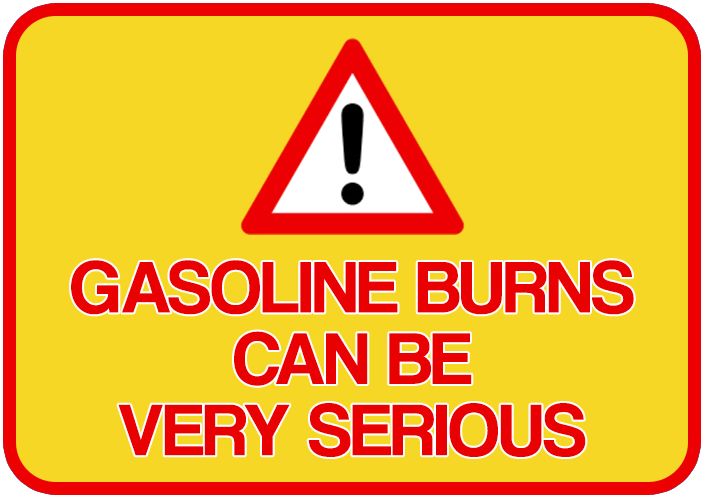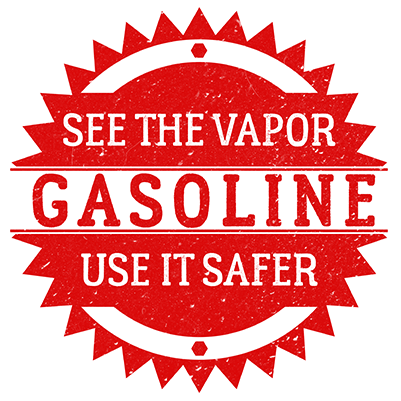Portable fuel containers are manufactured to meet all applicable requirements including Congressional statutes, EPA regulations and ASTM International (ASTM) standards. An ASTM technical subcommittee for portable fuel containers, which includes representatives of industry, consumer safety advocates and the Consumer Product Safety Commission (CPSC), continuously assesses product safety to ensure that safe and appropriate technology is being used.
The portable consumer fuel containers manufactured in the last decades are entirely safe when used properly - which they are some 20 billion times each year. All containers carry a cautionary warning about the explosive nature of fuel vapor and the need to keep the fuel away from ignition sources.
Unfortunately many fires are caused when fuel, particularly gasoline, is misused - to accelerate a bonfire, to dissolve glue and clean off grease, to burn insect nests and so on. Portable fuel containers, made for pouring flammable fuels carefully into the tank of equipment with an internal combustion engines, should not be misused in scenarios with a high risk of bringing explosive vapor in contact with an ignition source.
Internal Ignition
It was long believed that fuel ignition inside a portable fuel container was not possible because the fuel/air mixture was too ‘rich’ to ignite under typical storage and use conditions. When preliminary research determined that the fuel vapor in the headspace of a portable fuel container could ignite under very specific misuse conditions, the ASTM subcommittee commissioned an independent research project. An extensive study was undertaken by Worchester Polytechnical Institute (WPI) Fire Protection Engineering Professor Ali Rangwala for the ASTM Task Group.
The major impact from this work is the basis for a new ASTM standard related to FMD testing.
The ASTM Standard
In July 2016 the ASTM Subcommittee F15.10 undertook to draft a standard test method to determine the effectiveness, flow resistance, and durability of flame mitigation devices for portable fuel containers. The test method objectives are:
- to ascertain the capability of a particular flame mitigation device installed in a particular fuel container under high challenge flame propagation conditions that may be experienced in portable fuel container use and conceivable consumer misuse;
- to confirm that the flame mitigation device does not significantly inhibit fuel flow and
- to verify that the flame mitigation device has durability commensurate with the expected container service life.
The Standard Specification for Flame Mitigation Devices on Portable Fuel Containers (ASTM F3326) was issued by ASTM at the end of 2018.
The Result

Over the years, numerous safety and environmental features have been added to portable fuel containers, most significantly, child-resistant closures and environmental measures that do not allow vapors to escape. The industry was actively involved in each of these changes, which took time to develop, assess and implement. The same approach has been taken to the introduction of flame mitigation devices. Portable Fuel Containers with Flame Mitigation Devices meeting the draft standard are already being produced.
Portable fuel containers will still carry the cautionary warning about the explosive nature of fuel vapor and the need to keep the fuel away from ignition sources. A Flame Mitigation Device can only prevent the relatively rare internal vapor ignition and not the hazard caused by ignition of vapors external to the PFC when the fuel in the PFC is poured onto or near to a fire or other ignition source causing these external vapors to ignite or explode.

Good judgement is the only intervention for such hazards and the PFCMA applauds the efforts of superhero Lumber Jake to raise awareness of the hazards of gasoline vapor.

Gasoline continually releases invisible & highly combustible vapors. They may be surrounding you and others as you pour. Any ignition source will cause these vapors to burn or explode. Gasoline contains tremendous energy and is made for one purpose– as an engine fuel.
Never use gasoline to start or accelerate a fire. It is far too dangerous.
